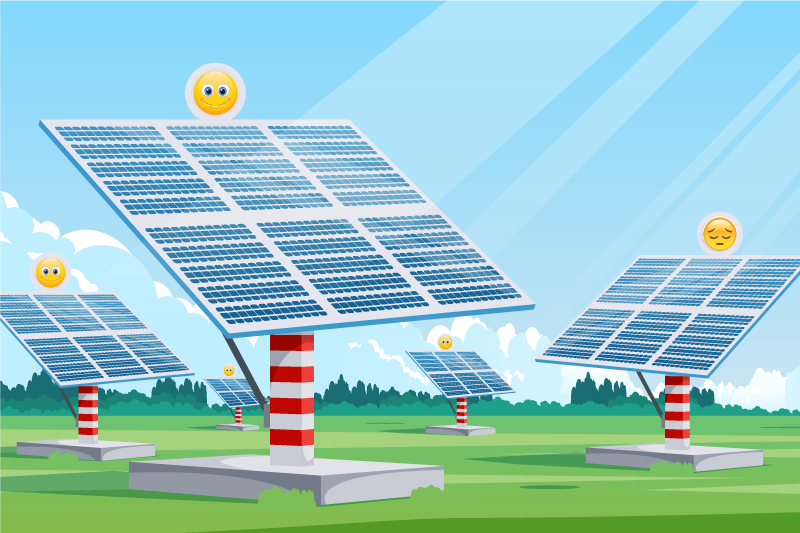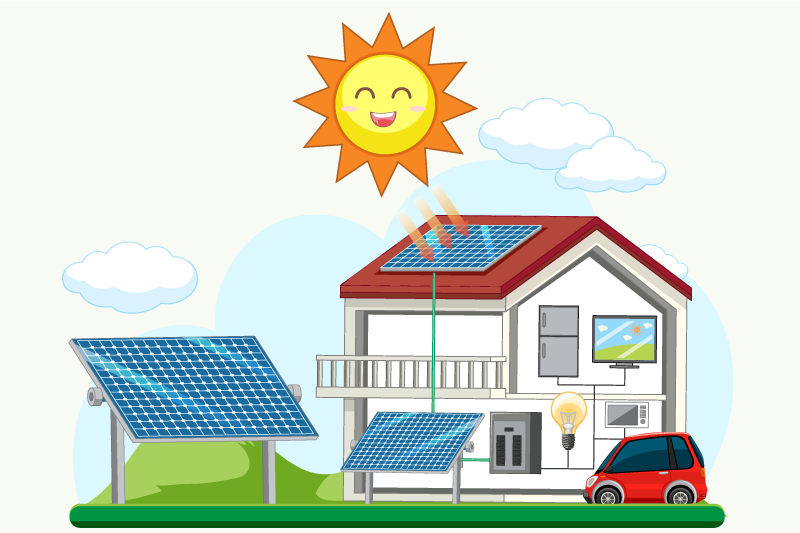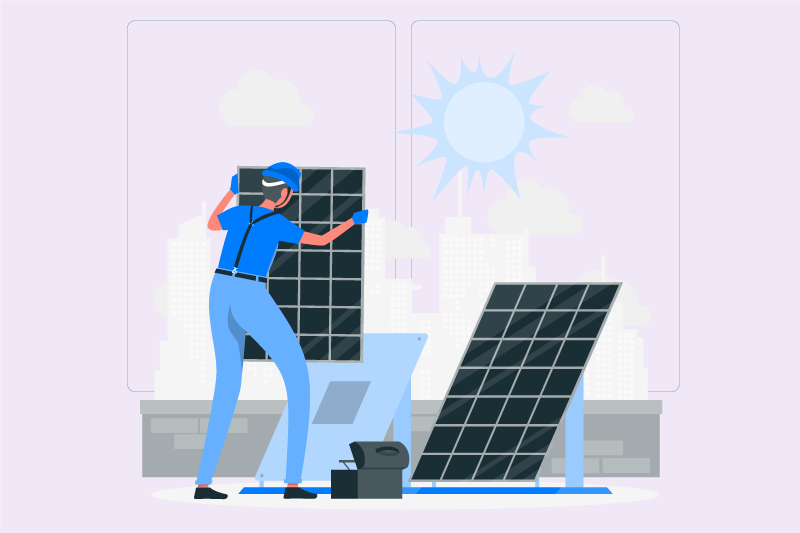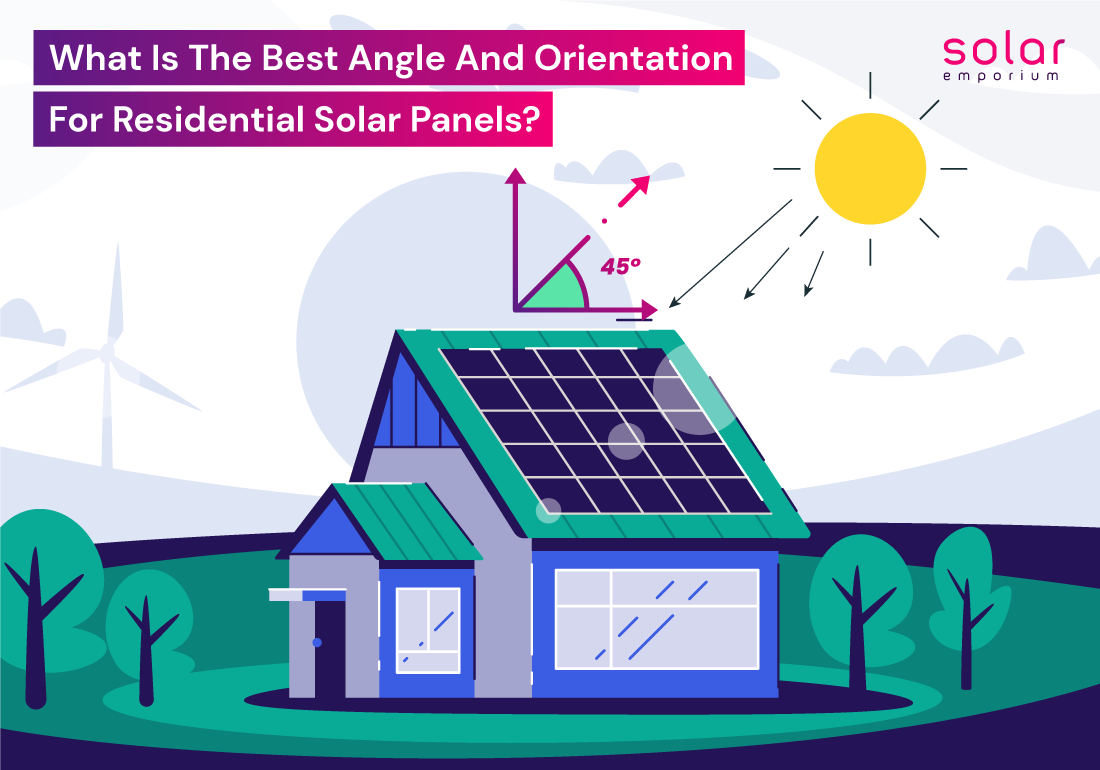If you’re planning to put solar panels on your house in Australia, you might be thinking about which way they should face to get the most sunlight.
Our solar expert can give you the best advice for your situation. But there’s a general rule that usually works well. So what is the best angle and orientation for residential solar panels?
Setting your panels at this angle means they’re close to or match the latitude of your home. Doing this helps your panels soak up more sunlight more often, which means they can produce more electricity.
Australia has lots of rooftop solar panel systems, more than 2.3 million of them! Almost 20,000 new ones are added every month. Using sunlight to make power is smart and good for the Earth.
To make sure these solar panels work their best, it’s important to know where to put them. Today, we’ll talk about the best spot, direction, and way to place your solar panels to get the most out of them. It’s key to get the most power possible from your solar panels.
Best Orientation for Solar Panels in Australia
Solar energy is when we use the sun’s power to make electricity. Solar panel orientation means which way your solar panels face. It’s critical because it decides how much sunlight your panels can grab and turn into electricity.
In Australia, it’s usually best to have your solar panels facing north. North-facing panels in the Southern Hemisphere, like in Australia, get the most direct sunlight during the day. This helps them make the most solar energy.
When your panels face north, they catch sunlight from the part of the world where the sun is highest in the sky.
By pointing your solar panels north, you can use the sun’s path to get the most solar energy possible. North-facing panels get sunlight from sunrise to sunset for most of the day.
But if your roof doesn’t have much space or gets shaded, you can still get some energy from panels facing east or west. East-facing panels get sunlight in the morning, and west-facing ones get it in the afternoon.
However, north-facing panels usually make more energy than east or west-facing ones. Having your solar panels face north helps them get the most sunlight all day, which means they make more energy.
Also, tilting the panels at the right angle is important too. Ideally, the angle should match your location’s latitude to get the most sunlight over the year.
North-facing panels tilted at 30 degrees make the most solar energy all year round. This setup is especially good for people with a fixed feed-in tariff because it saves them the most money.
Best Angle for Residential Solar Panels

In Australia, it’s often best to have your solar panels facing true north and tilt them at an angle between 30 and 45 degrees. This is because we’re in the southern part of the world, and the sun moves northward.
Setting your panels in this way means they’re almost the same angle as the latitude of your home. This helps your panels get more sunlight more frequently, which means they can make more power.
So, by pointing your solar panels towards true north and tilting them at the right angle, you can make sure they get lots of sunlight, which makes them produce more electricity.
When we say the best orientation for solar panels is true north and at a 30-45 degree angle, it’s because of how the sun moves across the sky in the Southern Hemisphere.
In Australia, the sun appears to move from east to west during the day, but its path is angled towards the north.
So, by facing your solar panels towards true north, you’re directly aligning them with the sun’s path, allowing them to capture sunlight for most of the day.
The reason for tilting the panels at an angle between 30 and 45 degrees is to match the angle of the sun’s rays during different seasons.
In the summer, the sun is higher in the sky, so tilting the panels closer to 30 degrees allows them to capture more sunlight.
In the winter, when the sun is lower, tilting them closer to 45 degrees helps maximize exposure to sunlight.
By matching the angle of your solar panels with the angle of the sun’s rays throughout the year, you ensure they receive optimal sunlight exposure, leading to increased power generation.
So, the combination of facing true north and tilting the panels at the right angle allows your solar panels to capture more sunlight more often, ultimately resulting in greater electricity production and more savings on your energy bills.
Why is the Orientation and Angle Important for Solar Panels?
Where you put your solar panels matters because they need sunlight to work well. To make sure your solar panels work their best, you have to think carefully about where and how you put them.
The angle you choose affects how much energy your solar panels can make from sunlight and how much money you can save on your energy bills.
But sometimes, things like trees or how strong your roof is can make it hard to put your solar panels in the best spot.
We want our solar panels to catch sunlight when it’s strongest, which is usually around midday.
If you lived in the Northern Hemisphere, it would be the opposite, and you’d want your solar panels facing south to get the most sunlight each day.
Since the sun moves across the sky during the day, panels that are perpendicular (straight up and down) will always have an advantage in catching sunlight.
So, the best place for your solar panels depends on your situation. Solar Emporium’s solar experts can help you figure out the best setup for your needs and how much energy you use.
If you’re thinking about getting solar panels for your roof, it’s a good idea to check out reviews of different solar panel installers to find the ones that are trusted by other people.
Best Angle and Orientation for Best Output

How much energy you lose depends on how the panels are facing. If your roof is tilted around 10° to 15° from the ideal angle, you might only lose 1% to 1.5% of the most energy you could get.
For example, in Melbourne, if your roof is facing north and tilted at 23°, you’d get about 98.5% of the best possible energy. If it’s tilted at 28°, you’d get around 99%.
The Clean Energy Council has shared data showing how much energy you lose from different angles in different cities.
But if your roof is flat, you lose more energy. In Melbourne, if your roof is perfectly flat, your panels would only make 86% of the energy they could at the best angle. In this case, it doesn’t matter which way your roof faces, since it’s flat.
It’s different in a city like Brisbane, where the best angle is different because it’s further north. In Brisbane, a flat roof would make about 90% of the best energy.
As you go further north in Australia, flat roofs aren’t as much of a problem because the best angle for the sun is lower. The table below shows how much energy flat roofs make compared to the best angle for different cities in Australia.
What Does this Mean for Existing Solar Systems?
If you got your solar panels early and have a fixed feed-in tariff, having them facing north at a 30-degree angle is great for saving money.
Changing the direction of your current solar panels is possible, but it can be expensive. Usually, it’s better to buy more panels or a battery instead.
You don’t have to keep your panels in one direction all the time. You can get a device called a tracker that moves the panels like a sunflower so they always face the sun.
This can make your panels produce 45% more energy. But trackers cost a lot of money, need special engineering, and have to be approved by the Clean Energy Council. For most homes, trackers aren’t worth it.
A cheaper way to get more energy might be to buy extra panels and point them in different directions.
If your panels are pointing in different directions, each group must be connected to its own special thing in the inverter called a Maximum PowerPoint Tracker (MPPT). Otherwise, your solar system won’t work well.
Another option is to use micro-inverters, but they’re more expensive than regular ones. If you already have a solar system and want to make sure it’s working right, active monitoring is the best way to check if everything’s okay.
Find the Right Solar Package for You With Solar Emporium

There are different solar packages to choose from based on what you require, where you live, and how much you can spend.
Our solar packages include quality solar panels along with batteries and inverters. They store extra solar energy so you can use it even when the sun isn’t shining.
Now, there are many ways to pay for solar panel installation. You can pay over time, which can make it more manageable.
Making sure your solar panel system works its best is important. It’s all about getting the most out of your solar panels.
The best setup for your solar system depends on how you use electricity and how much your panels can produce.
A trusted solar expert like Solar Emporium can design a solar system that’s just right for your home. We will figure out the best direction and angle for your solar panels based on where you live and how much electricity you use.
Click on Solar Emporium and find the best solar packages!







